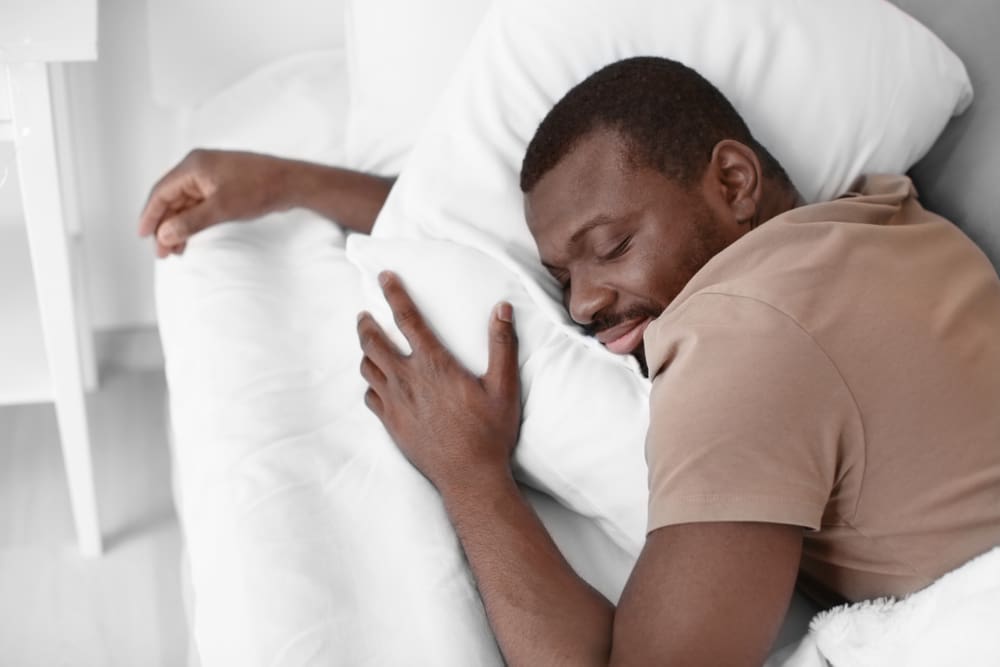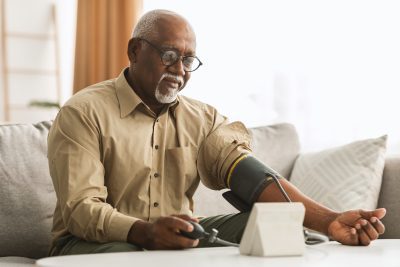That overwhelming sleepiness dragging you down might not just be from staying up too late scrolling through TikTok. While everyone occasionally battles the afternoon slump, people with hypersomnia or narcolepsy face a different reality altogether—one where the urge to sleep can strike with bulldozer force regardless of how many hours they spent in bed the night before. These aren’t just people who enjoy napping—they’re fighting neurological battles that can derail careers, relationships, and basic daily functions.
Though both conditions share that crushing daytime sleepiness, they’re actually distinct neurological disorders with different underlying mechanisms, symptoms, and treatments. Understanding these differences isn’t just medical trivia—it could be the key to reclaiming hours of your life currently lost to uncontrollable sleep. Let’s untangle these commonly confused conditions and explore what makes them unique sleep thieves.
Why your brain might be hijacking your wakefulness
Excessive daytime sleepiness sits at the core of both hypersomnia and narcolepsy, but the brain mechanisms behind each tell completely different stories. Think of hypersomnia as your brain’s volume knob for sleepiness getting stuck on high, while narcolepsy is more like having your sleep-wake switch randomly flipping without warning.
In hypersomnia, the brain’s wake-promoting systems seem perpetually underpowered. No matter how much sleep you get, your brain behaves as though you’re running on empty. This is why people with hypersomnia can sleep 12-14 hours yet still wake feeling as though they haven’t slept at all.
Narcolepsy, on the other hand, involves a fundamental breakdown in how your brain regulates the boundaries between wakefulness and sleep states. The brain chemical hypocretin, which helps maintain stable wakefulness, is dramatically reduced in people with narcolepsy type 1. This creates those sudden transitions into sleep that characterize the condition, along with bizarre symptoms like dream phenomena intruding into wakefulness.
The sleep attacks that expose the difference
Perhaps nothing distinguishes narcolepsy more clearly than sleep attacks—those sudden, irresistible episodes where sleep overtakes you completely, often in the middle of activities. Unlike the persistent drowsiness of hypersomnia, these attacks strike with little warning.
Someone with narcolepsy might be actively engaged in conversation before abruptly falling asleep mid-sentence. These aren’t gradual transitions—they’re rapid surrenders to sleep that can last anywhere from a few seconds to several minutes. Even more telling, the person often resumes exactly where they left off upon waking, sometimes unaware they even fell asleep.
Hypersomnia presents differently. Rather than discrete sleep attacks, it manifests as an unrelenting wave of sleepiness that builds throughout the day regardless of how much sleep the person got the night before. The overwhelming urge to sleep never truly vanishes, though it might temporarily lessen with rest. This constant battle against sleepiness creates a fog that colors every waking moment.
Cataplexy reveals narcolepsy’s unique neurological signature
The most distinctive feature separating narcolepsy type 1 from hypersomnia is cataplexy—sudden episodes of muscle weakness triggered by strong emotions like laughter, surprise, or anger. These episodes range from barely noticeable knee buckling or facial drooping to complete collapse while remaining fully conscious.
This strange symptom occurs because the muscle paralysis that normally only happens during REM sleep inappropriately activates during wakefulness. Imagine your body suddenly acting as though you’re in dreamland while you’re fully awake and aware—a terrifying experience that can put people in dangerous situations.
People with hypersomnia never experience cataplexy, making this symptom a critical diagnostic differentiator. If someone with excessive daytime sleepiness also experiences muscle weakness during emotional moments, narcolepsy becomes the more likely culprit behind their symptoms.
The nap test that tells these conditions apart
One surprisingly effective way to distinguish these disorders involves observing what happens during and after napping. This difference is so consistent that sleep specialists use it as a diagnostic clue when evaluating patients.
For people with narcolepsy, short naps often provide remarkable temporary relief from sleepiness. A 15-20 minute power nap can refresh someone with narcolepsy for hours afterward, almost like hitting a reset button on their alertness. This happens because they typically enter REM sleep almost immediately upon falling asleep, getting efficient sleep refreshment in minimal time.
The opposite occurs in hypersomnia. Naps bring little or no relief regardless of duration, and people often wake feeling even more disoriented and groggy than before. This “sleep drunkenness” or sleep inertia can be profound, with some reporting it takes hours to become fully alert after sleeping. The persistence of grogginess after napping points strongly toward hypersomnia rather than narcolepsy.
Nighttime sleep reveals opposite problems
The pattern of nighttime sleep provides another crucial distinction between these conditions. While both involve problems with the sleep-wake system, they manifest in opposing ways once the lights go out.
People with hypersomnia typically sleep extraordinarily long hours—often 10 to 14 hours or more—yet still wake unrefreshed. Their sleep is unusually deep and uninterrupted, but somehow fails to resolve their sleepiness. Many describe being nearly impossible to wake, sleeping through multiple alarms, and experiencing extreme disorientation upon awakening.
The narcolepsy sleep pattern looks completely different. Despite profound daytime sleepiness, nighttime sleep is typically fragmented and disrupted with frequent awakenings. People with narcolepsy often enter REM sleep within minutes of falling asleep rather than the normal 90-minute delay, creating an unstable sleep architecture that prevents truly restorative rest.
Dream phenomena creating waking nightmares
The boundary between dreaming and wakefulness becomes bizarrely blurred in narcolepsy in ways that rarely occur in hypersomnia. This dream intrusion creates some of the most disturbing symptoms associated with the condition.
Sleep paralysis—being unable to move while falling asleep or waking up—affects many people with narcolepsy. During these episodes, they remain conscious but completely unable to move or speak, sometimes experiencing hallucinations that feel terrifyingly real. This happens because the muscle paralysis of REM sleep persists into wakefulness.
Hypnagogic hallucinations are another dream phenomenon unique to narcolepsy. These vivid sensory experiences occur at the edge of sleep, causing people to see, hear, or feel things that aren’t really there. Combined with sleep paralysis, these hallucinations can create profoundly disturbing experiences that rarely occur in hypersomnia.
The brain chemicals revealing different origins
The underlying neurochemistry of these disorders points to fundamentally different mechanisms, explaining why treatments that work for one condition might fail for the other.
Narcolepsy type 1 has a clear biological marker—the severe deficiency or complete absence of hypocretin, a neurotransmitter produced by a tiny cluster of cells in the hypothalamus. This deficiency occurs because the immune system mistakenly attacks and destroys the cells producing this crucial brain chemical. This autoimmune origin explains why narcolepsy sometimes develops suddenly after certain infections or vaccinations that trigger this misguided immune response.
Hypersomnia’s neurochemistry remains more mysterious. Rather than lacking a specific neurotransmitter, some research suggests people with hypersomnia may produce an unidentified substance that enhances the effects of GABA, the brain’s primary inhibitory neurotransmitter. This would explain why their brains seem perpetually sedated despite no obvious structural abnormalities.
Treatment approaches highlight biological differences
The medications that effectively combat these conditions further underscore their distinct biological underpinnings, with some treatments working dramatically better for one disorder than the other.
Stimulant medications like modafinil, methylphenidate, and amphetamines form the frontline treatment for both conditions, promoting wakefulness by increasing dopamine activity. However, people with hypersomnia often find these medications provide less complete relief than those with narcolepsy, suggesting different mechanisms driving their sleepiness.
Sodium oxybate dramatically helps narcolepsy by consolidating nighttime sleep and reducing cataplexy but shows less consistent benefits for hypersomnia. Newer medications targeting different neurotransmitter systems, like pitolisant, which affects the histamine system, demonstrate varying effectiveness between the conditions.
Interestingly, some people with hypersomnia respond to medications that would seemingly worsen sleepiness, such as flumazenil, which blocks GABA receptors. This paradoxical response further supports the theory that hypersomnia involves abnormal sensitivity to the brain’s natural sedative systems rather than a specific neurotransmitter deficiency.
The impact on life takes different forms
Both conditions significantly impact quality of life, but they disrupt daily functioning in distinctly different patterns that affect everything from career choices to social relationships.
The narcolepsy impact often centers around unpredictability. Never knowing when a sleep attack or cataplexy episode might strike creates constant anxiety in social and professional settings. Many people with narcolepsy describe structuring their entire lives around avoiding emotional triggers or situations where suddenly falling asleep would be dangerous or embarrassing.
Hypersomnia creates a different life pattern, characterized by the sheer volume of life lost to sleep and the perpetual fog of sleepiness. Many describe functioning at a fraction of their potential, constantly fighting against the irresistible pull toward sleep. The need for extraordinary amounts of sleep—sometimes 12 to 16 hours daily—leaves precious little time for work, relationships, or leisure activities.
Finding answers through sleep studies
Proper diagnosis requires specialized sleep testing that can definitively distinguish between these conditions when symptoms alone create confusion.
The multiple sleep latency test measures how quickly someone falls asleep for scheduled naps throughout the day. People with both conditions fall asleep rapidly, but those with narcolepsy typically enter REM sleep during at least two of these short naps—a pattern rarely seen in hypersomnia.
Overnight polysomnography reveals the distinct sleep architecture differences mentioned earlier. The narcolepsy sleep pattern shows disrupted nighttime sleep with abnormally early REM periods, while hypersomnia typically shows extended but otherwise normal sleep structure.
For suspected narcolepsy type 1, measuring hypocretin levels in cerebrospinal fluid through a lumbar puncture provides the most definitive diagnosis, though this invasive test is usually reserved for cases where other testing remains inconclusive.
Getting help when excessive sleepiness takes over
If persistent daytime sleepiness disrupts your life despite adequate nighttime sleep, professional evaluation becomes crucial rather than continuing to struggle alone. While both hypersomnia and narcolepsy can take years to diagnose correctly, treatments can significantly improve quality of life once the specific condition is identified.
Seeing a sleep specialist rather than a general practitioner dramatically increases the likelihood of proper diagnosis, as these neurological sleep disorders often get misdiagnosed as depression, anxiety, or simply poor sleep habits by doctors less familiar with their presentation.
Both conditions can improve with medication alongside strategic lifestyle management. Scheduled short naps work well for narcolepsy, while strict sleep hygiene and avoiding sedating substances benefit hypersomnia. The key lies in tailoring approaches to the specific disorder rather than treating all excessive sleepiness as the same problem.
Understanding the differences between hypersomnia and narcolepsy opens pathways to more effective treatment and management strategies. These aren’t just variations of being “really tired”—they’re distinct neurological conditions with different underlying mechanisms. Recognizing these differences can mean the difference between years of suffering and finding effective ways to reclaim wakefulness and the life that comes with it.
















